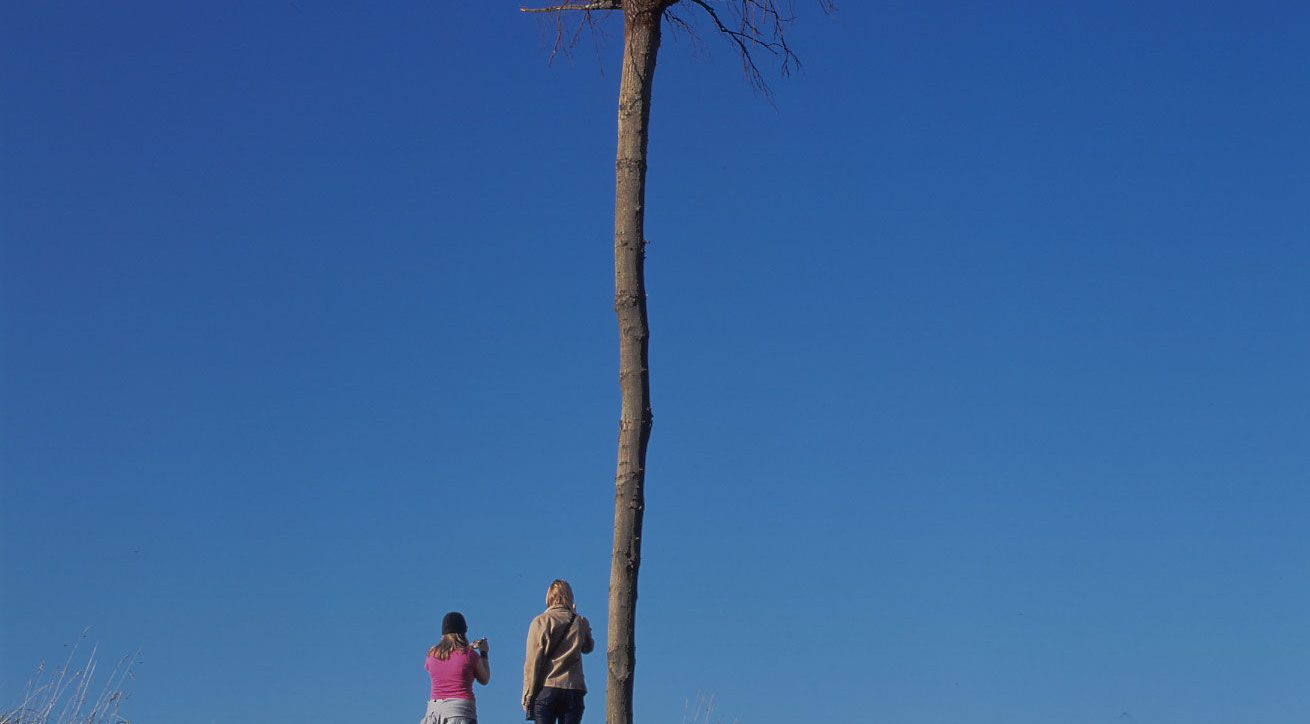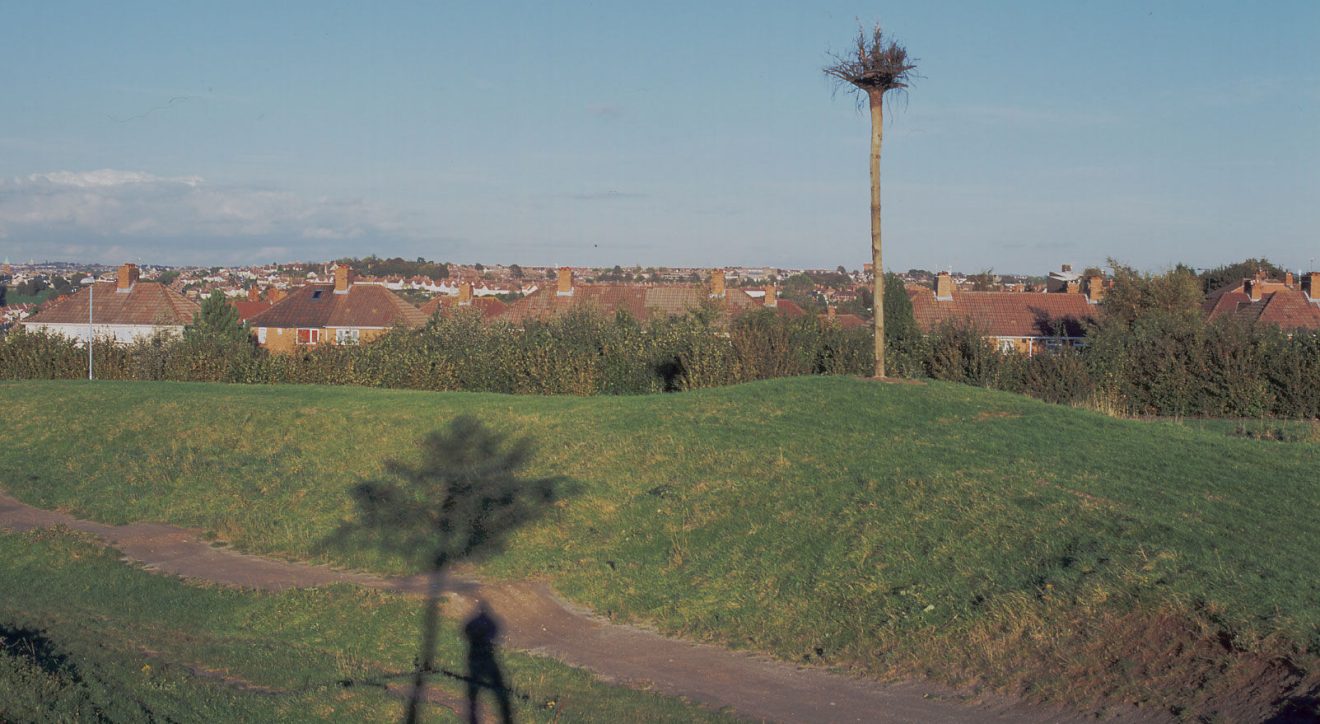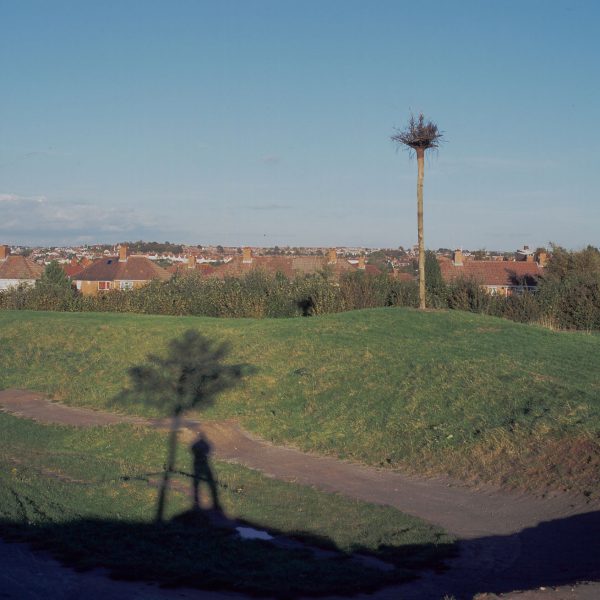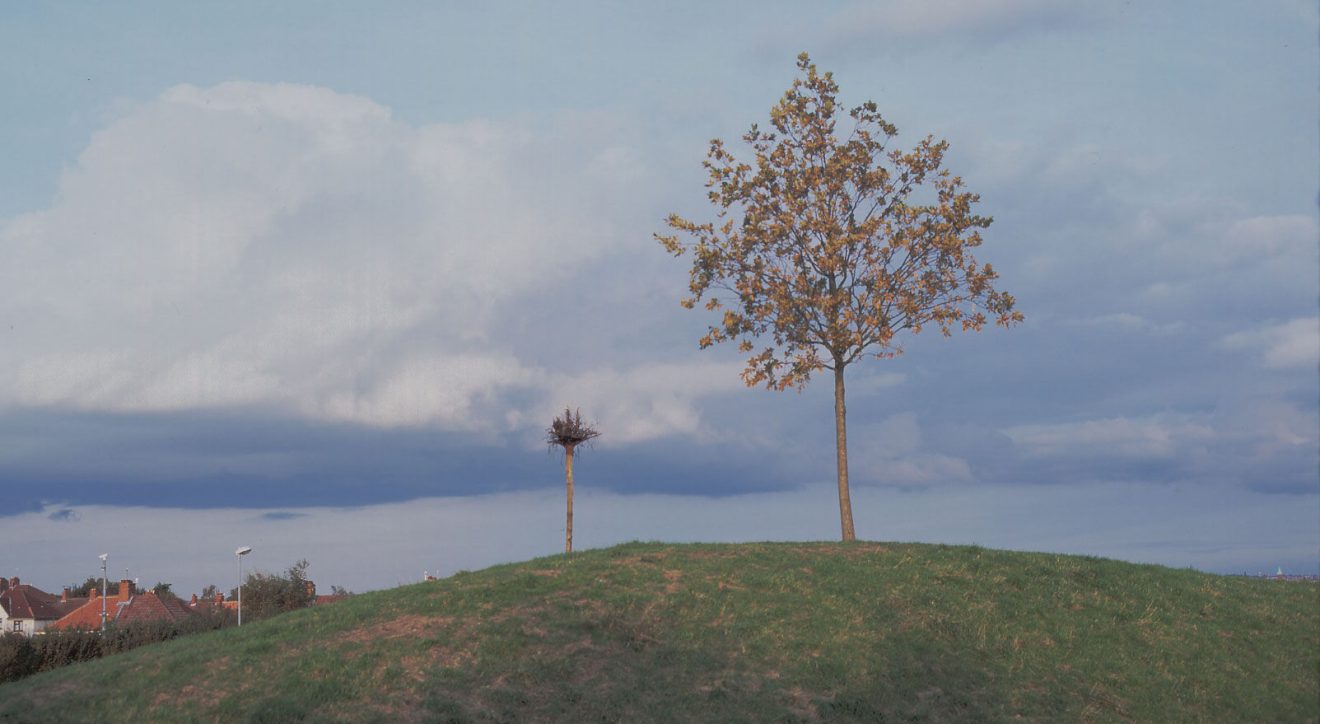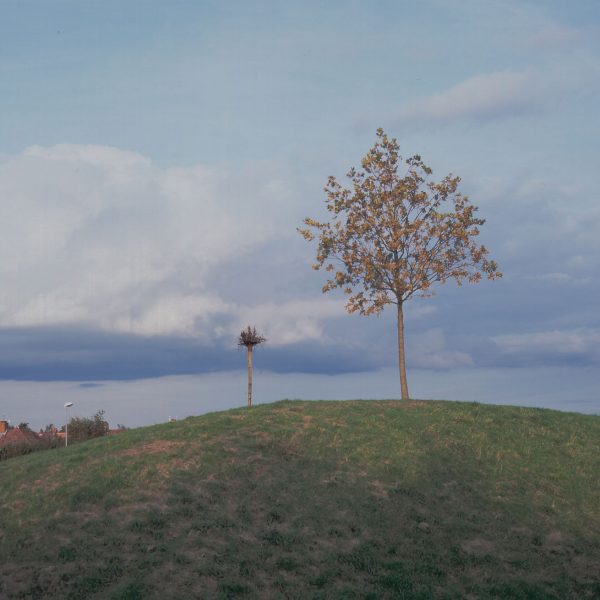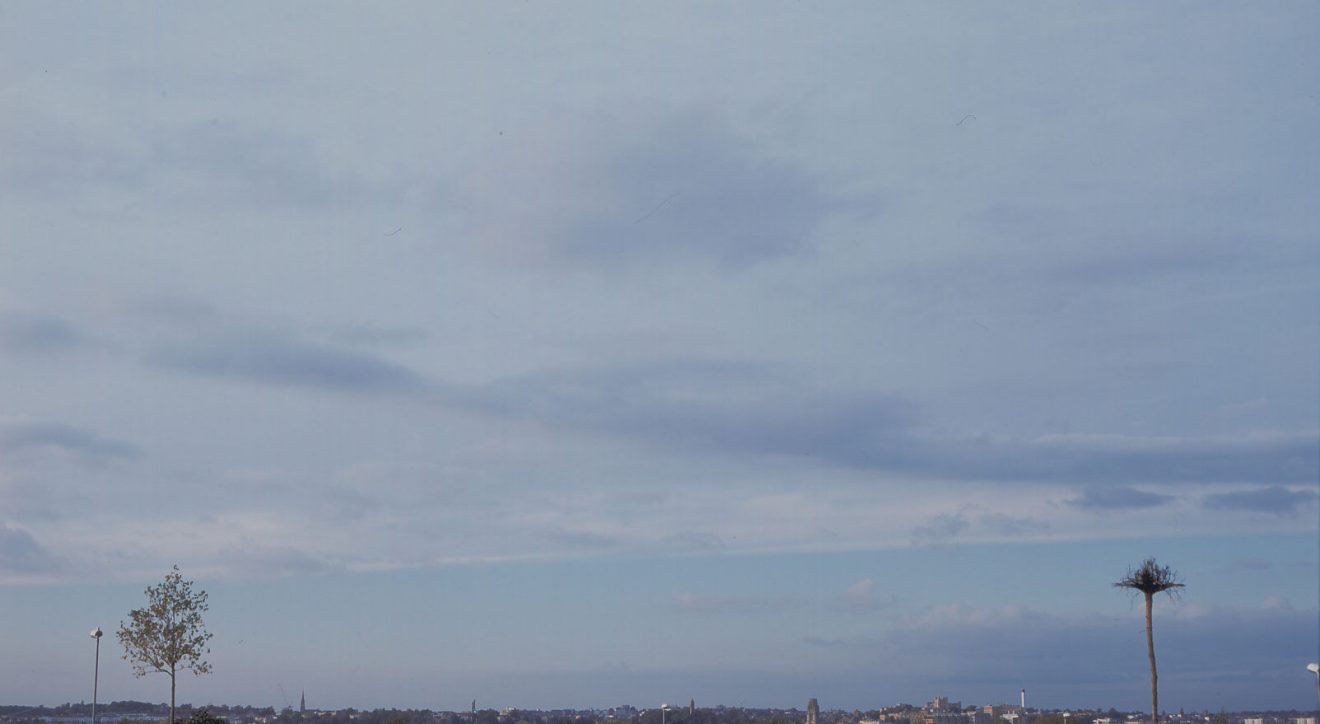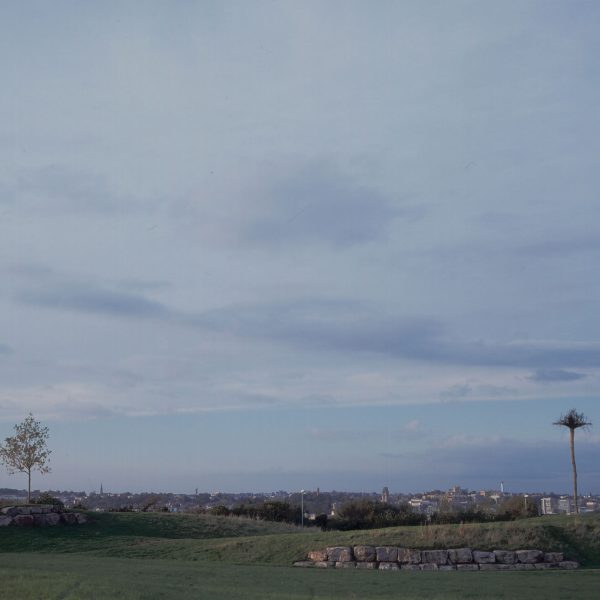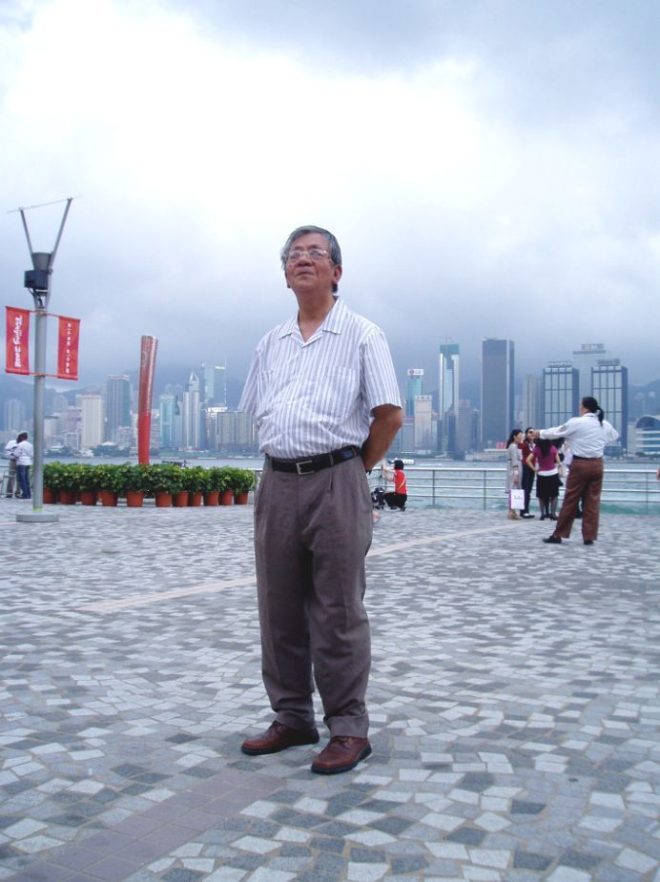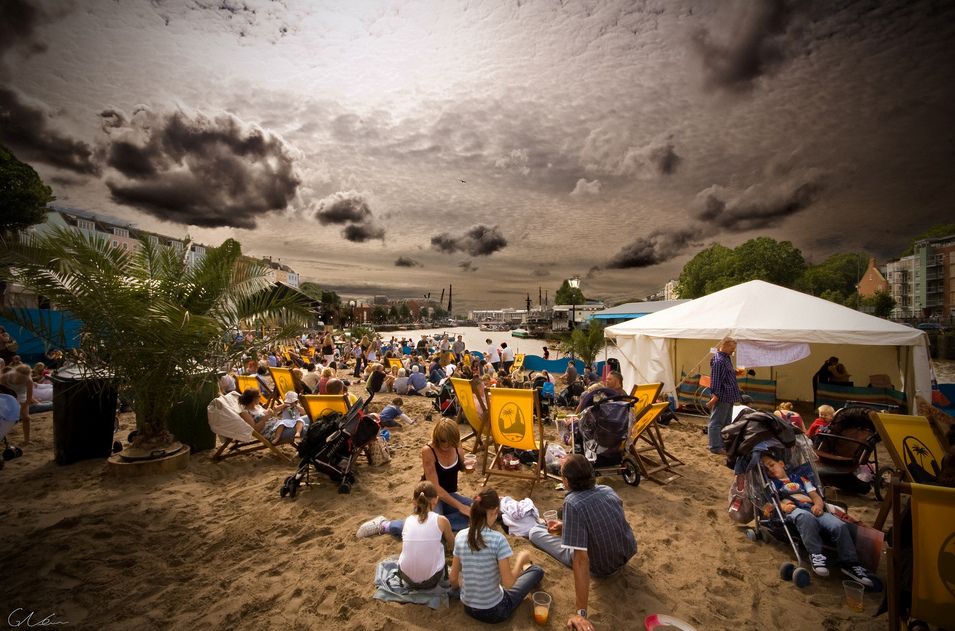
Synopsis
Life Cycle was a temporary art work for Knowle West Health Park, Bristol, by Macedonian artist Elpida Hadzi-Vasileva. The work was installed in August 2004 and comprised two oak trees, one live (9m high), and a second upside down (12m high).
Description
For the artist, the act of being ‘uprooted and rooted again’ was a conceptual act; the giving of a second chance. The living tree continued to grow and become a centerpiece whereas the upside-down tree continued to age and regenerate.
The commission was developed as part of The Art of Well-Being project at Knowle West Health Park in Bristol. The aim of the programme was to create artworks within the Health Park ranging from functional objects such as bins and seating designed by artists and local people, to innovative lighting, sculpture, signposting, earthworks, sound and water sculptures. The programme was conceived as a way of increasing local involvement in neighbourhood renewal, and it was intended that there should be opportunities for the local community to be involved with workshops and production of work. With the exception of 23 Hours and the work at the Renal Dialysis Unit, the public art programme left a legacy of vandalism, disappointment and disagreement.
The Art of Wellbeing Lead Artist was Michael Pinsky. It featured work by Luci Gorrell Barnes, Karen Brett, Barbara Disney, Deborah Jones, Michael Pinsky, Benedict Phillips, and Elpida Hadzi-Vasileva. It was funded by the regional arts lottery programme.
Elpida Hadzi-Vasileva
Elpida Hadzi-Vasileva is a Macedonian born artist, living in the United Kingdom, who creates ambitious sculptural works and site-specific installations. Working with materials that are unusual, precious, ordinary and ephemeral, from organic materials and foodstuffs to gold leaf, Hadzi-Vasileva’s practice questions notions of death, identity and beauty. Central to the artist’s approach is an interest in responding to the particularities of a given location, its history, environment and communities.
"The tension and delicate balance between man’s use and interaction with nature, birth, death and regeneration are part of everyday life, precarious and at the mercy of external forces. In ‘Life Cycle’ the use of unmediated, natural everyday material, a material that we take for granted, was used in an attempt to raise awareness of their balance and fragility, where light, darkness and moisture combine to regenerate and re-evolve."Elpida Hadzi-Vasileva
